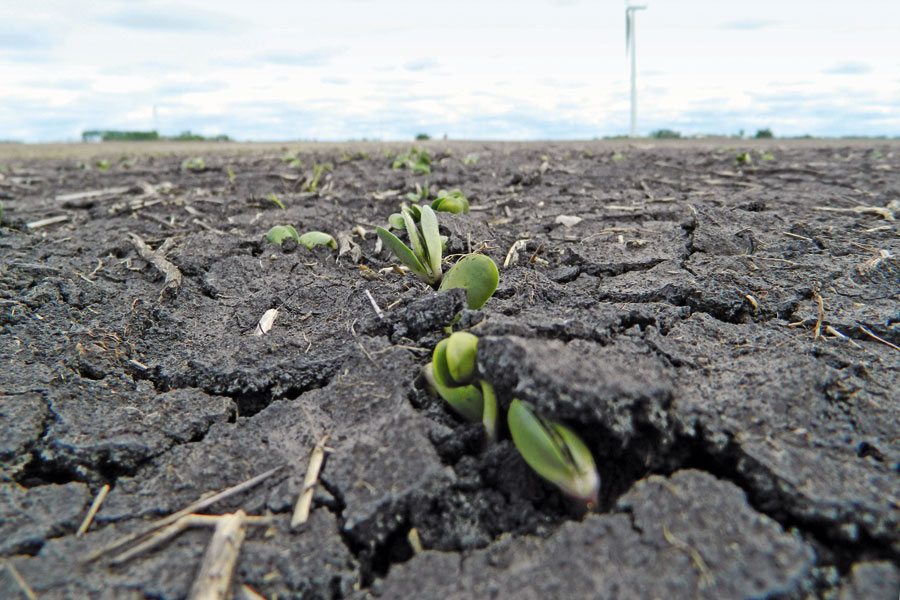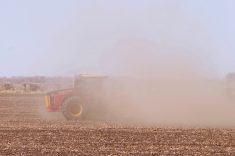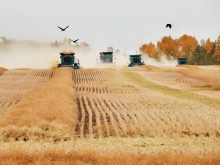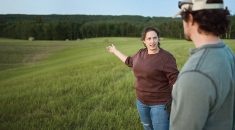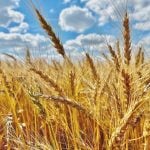The notion of value is a tricky one. For many, it unequivocally refers to money. When a new product promises to deliver more value to your farm, most of us take that to mean that product is going to increase our profits. Or, if not explicitly that, it will make our farms better in a different way, like, say, increase the horsepower of a tractor or the efficiency of an implement.
“Delivering more value to farmers” is a phrase I’ve heard often. And I’ve thought about its meaning often, as well.
Read Also

Claas brings 1000 Series SP forage harvesters to Canada
In mid-August, Claas unveiled its new line of Jaguar forage harvesters at an event in Visalia, California, deep in the heart of that state’s dairy region.
I thought I knew what value means to farmers. I assumed it was as I mentioned: either money or an obvious improvement. It made sense. As a farmer myself, money comes up often.
Much of what we do on our farms revolves around money. The word gets frequent attention in our vocabularies. Input costs erode tight profits. Markets tank and transportation costs rise. Markets bounce back and we act quickly to move product along the line. We are constantly aware of money. It would be intuitive that we’d associate it with value.
I held until now that value must be as quantifiable as the chair you’re sitting on.
I was wrong. Value is not such a simple, black and white concept to many people. And I met a bunch of those people the other day. The whole experience was genuine in encouraging, uplifting ways. And it was also surprising.
Meeting someone new
In the moments leading up to meeting someone I’ve never seen before, a part of me is terrified I’m going to experience something completely unfamiliar — something I don’t yet recognize as human — something I have never seen in anyone else.
Like, when I meet someone who has been hailed as brilliant or amazing or exceptional. I assume that person is operating on a plane that has no connection to the one I reside on. That’s never the case. Most people like pizza. Add a few more blocks and you’ve got me. Add a few more and you’ve got someone else. Change the size and shape and you’ve got your best friend.
Whatever. People are interesting. And the people I met the other day are no exception.
I attended an ag event that honoured farmers who conducted research on their own farms with support from Manitoba Pulse & Soybean Growers’ On-Farm Network.
I work with this group but I didn’t have any responsibilities at this event. The research and production team took care of the details. I was there to learn about the program and do what I love: meet new people and chat with farmers.
I sat at a table full of unfamiliar people. I did so purposefully. It can be uncomfortable at first, but it is always rewarding.
One farmed a whole bunch of acres and could offer insight on what it’s like to farm on that scale. And the couple sitting beside him farmed fewer acres, but, as the afternoon progressed, it came out that the wife and husband team not only conduct their own on-farm research, but also do other things.
She went back to school and got a science degree after more than a decade working in a completely different field. She then learned to code on her own, and as a couple, they developed a smartphone app that helps farmers determine the moisture of their crops.
Once that gracious couple and the other man sitting at my table had suffered through my million or so follow-up questions regarding what it takes to develop an app, the conversation changed gears.
“What value do you get from doing the extra work of running a research program on your farm?” I asked. For me, it was the elephant in the room.
This table. My table. They were unanimous on this: they conducted research on their farms not for monetary gain, not for anything they could show off on Sunday morning, but because they had a genuine interest in seeing the results of whatever specific input or practice they were conducting research on.
I asked the question. I started the discussion. But just as quickly I was pushed out of it. The three farmers starting to chat amongst themselves about how interesting it was to see with their own eyes the differences in their test strips. They had big smiles on their faces. The kinds of smiles one would associate with genuine discovery.
They discovered things important to agriculture over the summer and that is exciting. They were proud of that — as they should be — and they looked forward to continuing with the program in 2018.
If I were a betting man, I would guess the rest of the room felt the same way. It was encouraging. It was genuine. I made friends and I learned that value as an idea not tied to cold, hard cash still has a place in agriculture. And that should make both of us happy.

